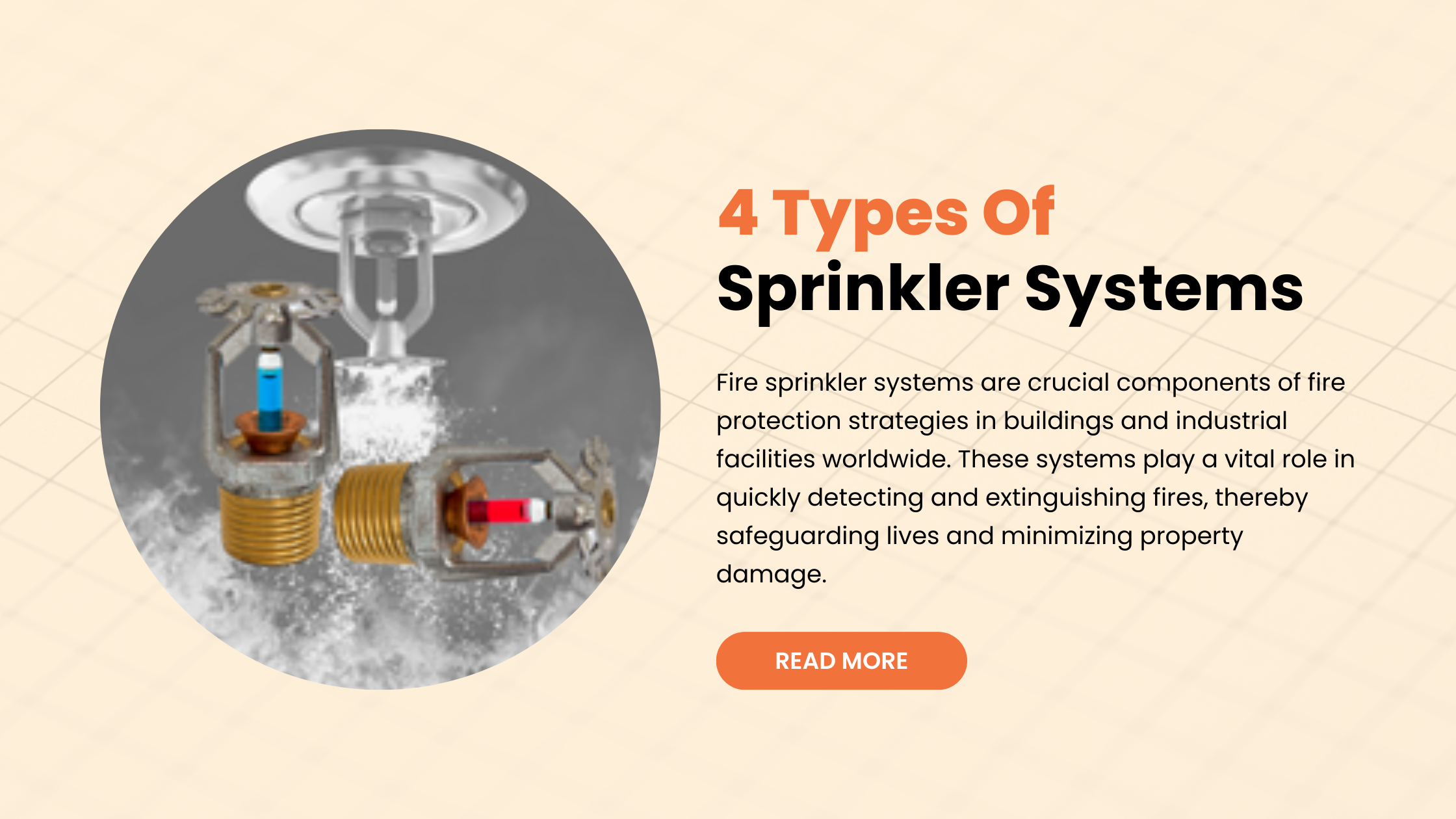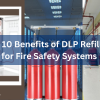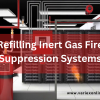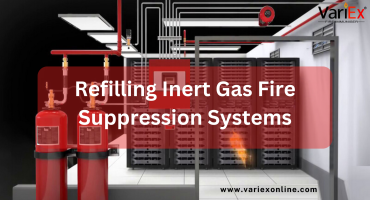![]()
Fire Immuniser
+91-7829629111
Email: info@variex.in
Varistor Technologies Pvt. Ltd.
Block-1, First Floor, Ardente Office One, Hoodi Circle, ITPL Main Road, Bengaluru, Karnataka 560048, IN
4 Types Of Sprinkler Systems
Fire sprinkler systems are crucial components of fire protection strategies in buildings and industrial facilities worldwide. These systems play a vital role in quickly detecting and extinguishing fires, thereby safeguarding lives and minimizing property damage. There are several types of sprinkler systems designed to meet specific environmental and safety requirements.
1. Wet Pipe Fire Sprinkler System
The wet pipe fire sprinkler system is the most common and straightforward type. It consists of pipes filled with pressurized water ready to discharge immediately upon activation. Water is held in the pipes at all times, ensuring rapid response to a fire event. When a sprinkler head detects sufficient heat, it opens to release water directly onto the fire or heat source, suppressing the flames and cooling the area.
Key Features:
- Simple and reliable design.
- Quick response time due to water always being in the pipes.
- Suitable for use in heated buildings where freezing is not a concern.
- Cost-effective installation and maintenance.
Applications: Offices, residential buildings, hotels, and other heated indoor environments.
2. Dry Pipe Fire Sprinkler System
A dry pipe fire sprinkler system is used in spaces where freezing temperatures may occur, such as unheated warehouses or parking garages. Unlike the wet pipe system, dry pipe systems are filled with compressed air or nitrogen instead of water. When a sprinkler head activates due to heat, the air pressure drops, allowing the valve to open and release water into the piping system. This water then flows through the pipes to the open sprinkler head to extinguish the fire.
Key Features:
- Prevents water from freezing in cold environments.
- Suitable for areas where pipes are exposed to low temperatures.
- Requires a slightly longer response time compared to wet pipe systems due to the need to fill the pipes with water after activation.
- More complex installation and maintenance compared to wet pipe systems.
Applications: Parking garages, warehouses, attics, and other areas subject to freezing temperatures.
3. Pre-Action Fire Sprinkler System
The pre-action fire sprinkler system combines aspects of both wet and dry pipe systems. It uses closed sprinkler heads connected to a piping system filled with pressurized air or nitrogen. Water is held back by an electrically operated valve that opens when a fire is detected. Before water is released into the pipes, a detection system (smoke detector or heat sensor) must first confirm the presence of a fire. This two-step process helps prevent accidental water discharge, minimizing water damage in sensitive environments.
Key Features:
- Provides an additional level of protection against accidental water discharge.
- Suitable for areas where water damage needs to be minimized, such as data centers or museums.
- Requires regular maintenance and testing of both the detection system and the sprinkler components.
Applications: Data centers, museums, libraries, and other areas with sensitive equipment or materials.
4. Deluge Fire Sprinkler System
The deluge fire sprinkler system is designed for high-hazard areas where rapid fire spread is a concern, such as chemical storage facilities or aircraft hangars. Unlike other systems, all sprinkler heads in a deluge system are open and connected to a piping system that is not pressurized with water. When a fire is detected, a deluge valve opens to release a large volume of water simultaneously through all sprinkler heads in the affected area. This system ensures that a significant amount of water is quickly delivered to suppress or extinguish the fire.
Key Features:
- Provides rapid and intense water discharge, ideal for controlling large fires.
- Suitable for environments where fire can spread quickly, such as fuel storage areas.
- Requires a reliable detection system to ensure timely activation of the deluge valve.
Applications: Oil refineries, chemical processing plants, aircraft hangars, and other high-hazard industrial settings.
Each type of sprinkler system offers distinct advantages depending on the specific requirements of the environment it is designed to protect. Understanding these differences allows for the selection of the most appropriate system to effectively mitigate fire risks while minimizing potential damage.
Frequently Asked Questions
A sprinkler system is a network of pipes, valves, and sprinkler heads designed to detect and extinguish or control fires automatically. It uses water or other extinguishing agents to suppress fires in buildings and industrial facilities.
Sprinkler systems work by detecting heat from a fire. When a sprinkler head reaches a certain temperature, typically between 135-165°F (57-74°C), it opens to release water onto the fire below. This rapid response helps to control or extinguish the fire before it can spread.
Sprinkler systems provide several benefits, including:
- Early fire detection and suppression.
- Reduction of property damage and loss.
- Protection of lives by creating a safer environment.
- Compliance with building codes and insurance requirements.
- Potential reduction in insurance premiums for building owners.
There are four main types of sprinkler systems:
- Wet Pipe Fire Sprinkler System: Pipes are filled with pressurized water, ready to discharge immediately when a sprinkler head detects heat.
- Dry Pipe Fire Sprinkler System: Pipes are filled with pressurized air or nitrogen, and water is released into the pipes only when a sprinkler head activates.
- Pre-Action Fire Sprinkler System: A hybrid system where water is held back by an electrically operated valve. Water is released into the pipes only after a fire is detected by a separate detection system.
- Deluge Fire Sprinkler System: All sprinkler heads are open, and a large volume of water is released simultaneously into the entire protected area when a fire is detected.
The choice of sprinkler system depends on factors such as building occupancy, environmental conditions, and fire hazards:
- Wet pipe systems are common in heated buildings.
- Dry pipe systems are used in unheated spaces to prevent freezing.
- Pre-action systems are suitable for areas with sensitive equipment.
- Deluge systems are employed in high-hazard environments where rapid fire control is critical.
Final Say
At VariEx.in and VariexOnline.com, we specialize in supplying and installing top-quality fire fighting systems and equipment. From fire extinguishers to advanced suppression systems, we offer comprehensive solutions tailored to your needs. Our experienced team ensures precise installation and maintenance for optimal safety.
Trust VariEx for reliable fire protection. Contact us online or call 7829629111 to learn more.










